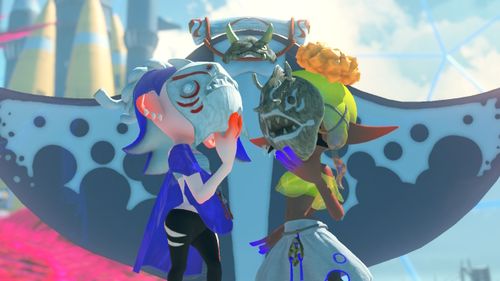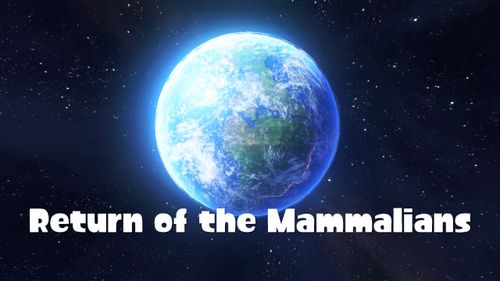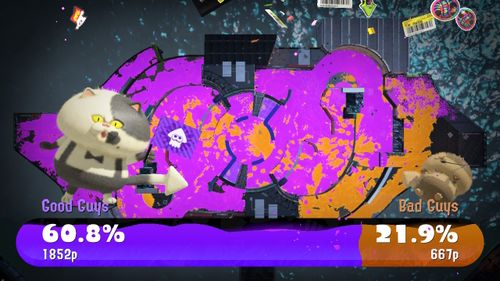I fell in love with Splatoon before firing a single blob of ink.
Mechanically it made too much sense and behind an infinitely replayable suite of online multiplayer match-ups, was a single player story with the creative flair to meld Mario Galaxy-inspired gauntlets with a third-person shooter.
Nintendo struck gold on a failing Wii U.
Seven years later, Splatoon is more popular than ever — cementing itself as Japan’s fastest selling Switch title to date. So why is its story mode struggling to stay fresh?
Splatoon 3‘s campaign opens in a barren wasteland. Its skyline is dominated by a hauntingly inverted Eiffel Tower as you make your way through a corridor of rusted metal sheets to a train platform plastered with red dust.
The isolation is palpable but for a new sidekick. We’ve never seen Splatoon like this.
Problem is, that lasts for all of five minutes.

The train takes you to another hub city, which has lost its great Zapfish (again).
Captain Cuttlefish — who might as well be called Princess Peach in Splatoon 3 — asks you to help investigate a mysterious fuzzy ooze before quickly getting captured himself, the ground collapses and saving him is all the motivation you get.
That fuzzy ooze I mentioned is everywhere but it’s treated as a roadblock to clear with your new sidekick, rather than a threat to nearby cities (despite killing you instantly if you touch it) seeing as you — and the entire campaign — takes part in a giant cavern.
Inside are six islands — dotted with “kettles” that take you to challenge levels — that look nothing like the wasteland you’ve fallen from.

Most of the islands are covered in snow instead of the dusty red sand many would have expected, although the stark white does stand out brilliantly against your vibrant ink.
Similarly, the levels themselves are standard Splatoon fare, which could have been plucked from any of the previous games or DLC.
Don’t get me wrong, these bite-sized challenges are as fun — and tough — as ever. But after two titles and a major DLC, it felt very familiar.
What did surprise me was an apparent lack of boss fights.
You’d think six islands would equal six bosses and a big baddie to take down at the end, but in Splatoon 3 there are bosses on just three of those six islands.
None are as inspired as the monstrous mechanical beings which towered over players in previous entries, and one is straight ripped out of Super Mario Sunshine.

For a campaign dubbed “Return of the Mammalians”, there are barely any mammals for our squid friends to contend with.
Some of the standard enemies are a little furrier but that’s never explored or explained.
Instead, your competition comes in the form of a trio of bandits called Deep Cut.
Shiver, Frye and Big Man want the same “treasures” in the cavern you need to progress (calling these pieces “treasure” is a big stretch by the way) and they act more like Pokemon’s Team Rocket than a true enemy.

You fight each of them once before assembling this “treasure” to unlock a seventh and final island (of sorts) and the road to the final boss.
“Return of the Mammalians” appears on screen for the first time after you’ve cleared all six areas, making it feel more like an after-thought than a major driver of the story.
That didn’t stop me clearing every level and chasing down every collectible. The challenge of Splatoon 3 is infectious enough to make you want to play one more level, even after playing for hours straight.
Its mechanics are fantastic but they were just as great in 2015.

I was truly excited for an evolution that pushed Splatoon in a new direction, like so many other Nintendo staples have enjoyed in the Switch era.
Splatoon 3‘s trailers made promises it was never designed to deliver.
I wanted to explore the wasteland. I expected mammals to return and change the face of Splatoon like the Octolings before them.
None of that happens and for most, that will be just fine.
Its story is worth a playthrough to polish your skills before picking up shifts for Grizz Co in an expanded Salmon Run, or taking on the world in the same exhilarating online battles that established the franchise as a heavy-hitter.

Be the first to comment